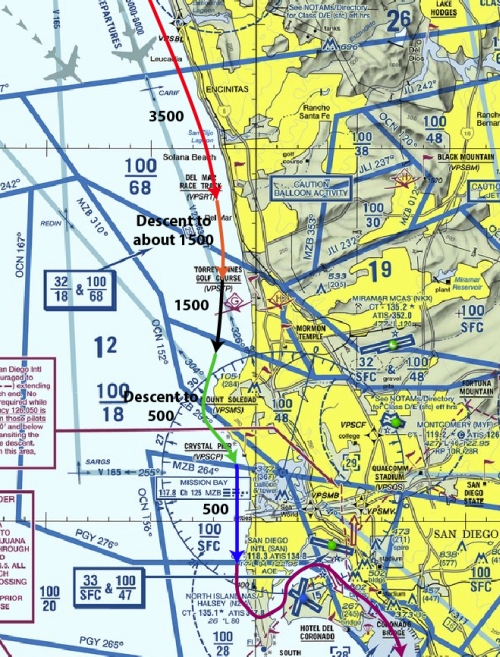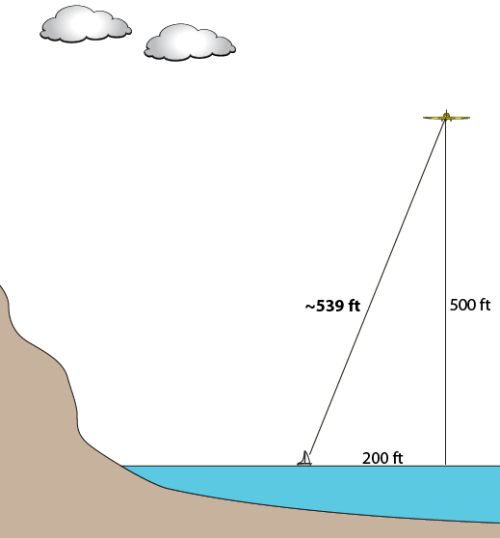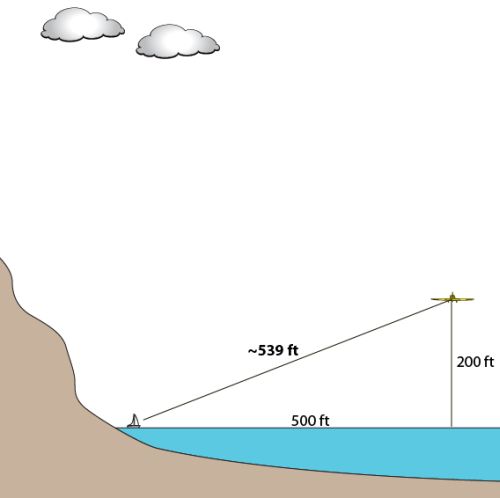eetrojan
Pattern Altitude
The other day, I had flight following while flying south along the coast, down to San Diego. I told SoCal Approach that I wanted to request a low coastal transition from Lindbergh Tower (the blue arrow below).
At some point while I was flying at 3500 feet (red arrow below), SoCal explicitly cleared me into the Bravo.
In preparation to get down to the 500 feet needed for the transition, I made an initial descent to about 1500 (orange arrow), and then dropped some more altitude from there (black arrow).
At about that point, SoCal said something like, "You're outside the Bravo. Squawk VFR, contact Lindbergh Tower and request your transition directly from them." Maybe I misconstrued it, but the controller's tone made it seem like I did something wrong. My memory may be off as to what was said, but that's what I recall.
It all worked out fine when I called Tower, but left me wondering if I did something unexpected.
Should I have tried to remain higher, longer, to stay in the Bravo shelves while I was with SoCal? Did I get too low and drop of their display? Is it just normal?

At some point while I was flying at 3500 feet (red arrow below), SoCal explicitly cleared me into the Bravo.
In preparation to get down to the 500 feet needed for the transition, I made an initial descent to about 1500 (orange arrow), and then dropped some more altitude from there (black arrow).
At about that point, SoCal said something like, "You're outside the Bravo. Squawk VFR, contact Lindbergh Tower and request your transition directly from them." Maybe I misconstrued it, but the controller's tone made it seem like I did something wrong. My memory may be off as to what was said, but that's what I recall.
It all worked out fine when I called Tower, but left me wondering if I did something unexpected.
Should I have tried to remain higher, longer, to stay in the Bravo shelves while I was with SoCal? Did I get too low and drop of their display? Is it just normal?



